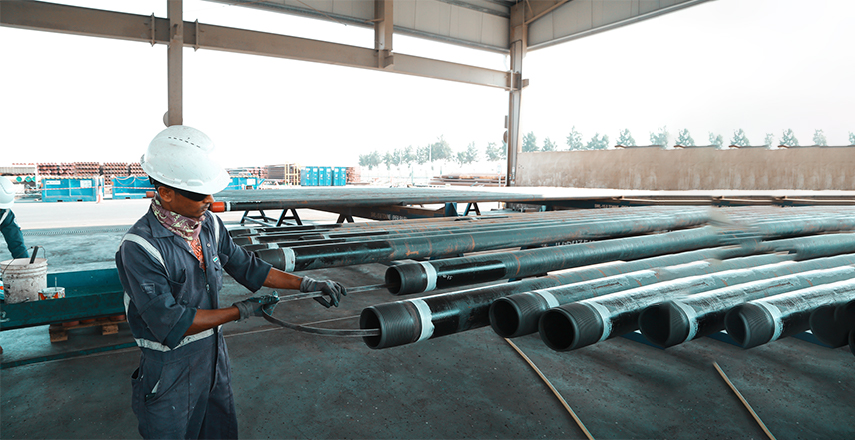Working hours:Mon - Sat 8.00 AM - 06.00 PMCall Us: +974 4427 5589
API-RP 7G – 2, STANDARD DS-1 AND NS-2 INSPECTION

Drill Pipe
These standards collectively provide comprehensive guidelines for the inspection of drill pipe, ensuring its integrity and safe operation. The specific requirements and recommended practices for drill pipe inspection can be found in API-RP 7G-2 and Standard DS-1, while NS-2 primarily pertains to the inspection of drilling structures.
Heavy Weight Drill Pipe
API-RP 7G-2 and Standard DS-1 are particularly relevant for the inspection of HWDP, covering inspection methods, intervals, acceptance criteria, and actions for repair or retirement. NS-2 primarily pertains to the inspection of drilling structures rather than heavyweight drill pipe specifically.
Drill Collars – Ferro Magnetic & Non – Ferro Magnetic
API-RP 7G-2: API-RP 7G-2 provides guidelines for the inspection and maintenance of drill stem elements, including drill collars both Ferro Magnetic and Non-Ferro Magnetic. Standard DS-1 specifies the appropriate actions for the repair or retirement of drill collars based on the severity of identified defects, ensuring their safe and reliable operation. NS-2 sets criteria for the inspection and certification of derricks, masts, and substructures used in drilling operations.
Bottom Hole Assemblies – Ferro Magnetic & Non – Ferro Magnetic (Subs, Stabilizers, Jars, Reamers, Mud Motors, MWD, LWD etc.)
API-RP 7G-2 and Standard DS-1 are particularly relevant for BHA inspection and covers various aspects such as visual inspection, dimensional inspection, and non-destructive examination (NDE) techniques such as magnetic particle inspection (MPI), liquid penetrant inspection (LPI), ultrasonic testing (UT), or eddy current inspection to detect potential defects or damage. While NS-2 is essential to comply with the structural inspection requirements outlined in the standard.
Fishing and Milling Tools (Junk Baskets, Taper Mills, Fishing Jars etc.)
API-RP 7G-2: API-RP 7G-2 provides guidelines that involve examining the tool’s overall condition, checking for any visible defects, and verifying dimensional specifications. Standard DS-1 focuses on visual inspection for any visible damage or wear, dimensional inspection to ensure the tool’s specifications are met, and potentially non destructive testing.
Dimensional Inspection of Rotary Shouldered Connections, Double Shoulder Connections, Hydril Wedge Connections, High Torque Connections, Extreme Torque Connections, etc
Dimensional inspection of Rotary Shouldered Connections, Double Shoulder Connections, Hydril Wedge Connections, High Torque Connections, Extreme Torque Connections and more typically involves measuring critical dimensions, thread profiles, taper angles, and other parameters specified by the connection manufacturer. DS-1 specifies the critical dimensions, tolerances, and acceptance criteria for these connections.
Doha Qatar
Headquarters
Stay in touch with us for any queries regarding our services.
LOCATIONS
